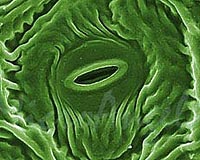 |
Cambridge UK (SPX) Jan 18, 2011 Chickens genetically modified to prevent them spreading bird flu have been produced by researchers at the Universities of Cambridge and Edinburgh. The scientists have successfully developed genetically modified (transgenic) chickens that do not transmit avian influenza virus to other chickens with which they are in contact. This genetic modification has the potential to stop bird flu outbreaks spreading within poultry flocks. This would not only protect the health of domestic poultry but could also reduce the risk of bird flu epidemics leading to new flu virus epidemics in the human population. The study, funded by the Biotechnology and Biological Sciences Research Council (BBSRC), is to be published in the Friday, 14 January issue of the journal Science. Dr Laurence Tiley, Senior Lecturer in Molecular Virology from the University of Cambridge, Department of Veterinary Medicine, said: "Chickens are potential bridging hosts that can enable new strains of flu to be transmitted to humans. Preventing virus transmission in chickens should reduce the economic impact of the disease and reduce the risk posed to people exposed to the infected birds. The genetic modification we describe is a significant first step along the path to developing chickens that are completely resistant to avian flu. These particular birds are only intended for research purposes, not for consumption." Professor Helen Sang, from The Roslin Institute at the University of Edinburgh, said, "The results achieved in this study are very encouraging. Using genetic modification to introduce genetic changes that cannot be achieved by animal breeding demonstrates the potential of GM to improve animal welfare in the poultry industry. "This work could also form the basis for improving economic and food security in many regions of the world where bird flu is a significant problem." To produce these chickens, the Cambridge and Edinburgh scientists introduced a new gene that manufactures a small "decoy" molecule that mimics an important control element of the bird flu virus. The replication machinery of the virus is tricked into recognising the decoy molecule instead of the viral genome and this interferes with the replication cycle of the virus. When the transgenic chickens were infected with avian flu, they became sick but did not transmit the infection on to other chickens kept in the same pen with them. This was the case even if the other chickens were normal (non-transgenic) birds. Dr Tiley continued, "The decoy mimics an essential part of the flu virus genome that is identical for all strains of influenza A. We expect the decoy to work against all strains of avian influenza and that the virus will find it difficult to evolve to escape the effects of the decoy. "This is quite different from conventional flu vaccines, which need to be updated in the face of virus evolution as they tend only to protect against closely matching strains of virus and do not always prevent spread within a flock." Professor Douglas Kell, BBSRC Chief Executive, said: "Infectious diseases of livestock represent a significant threat to global food security and the potential of pathogens, such as bird flu, to jump to humans and become pandemic has been identified by the Government as a top level national security risk. "The BBSRC funds world-class research to help to protect the UK from such eventualities and the present approach provides a very exciting example of novel approaches to producing disease-resistant poultry."
Share This Article With Planet Earth
Related Links University of Cambridge Farming Today - Suppliers and Technology
 Gene Helps Plants Use Less Water Without Biomass Loss
Gene Helps Plants Use Less Water Without Biomass LossWest Lafayette IN (SPX) Jan 18, 2011 Purdue University researchers have found a genetic mutation that allows a plant to better endure drought without losing biomass, a discovery that could reduce the amount of water required for growing plants and help plants survive and thrive in adverse conditions. Plants can naturally control the opening and closing of stomata, pores that take in carbon dioxide and release water. During dr ... read more |
|
| The content herein, unless otherwise known to be public domain, are Copyright 1995-2010 - SpaceDaily. AFP and UPI Wire Stories are copyright Agence France-Presse and United Press International. ESA Portal Reports are copyright European Space Agency. All NASA sourced material is public domain. Additional copyrights may apply in whole or part to other bona fide parties. Advertising does not imply endorsement,agreement or approval of any opinions, statements or information provided by SpaceDaily on any Web page published or hosted by SpaceDaily. Privacy Statement |